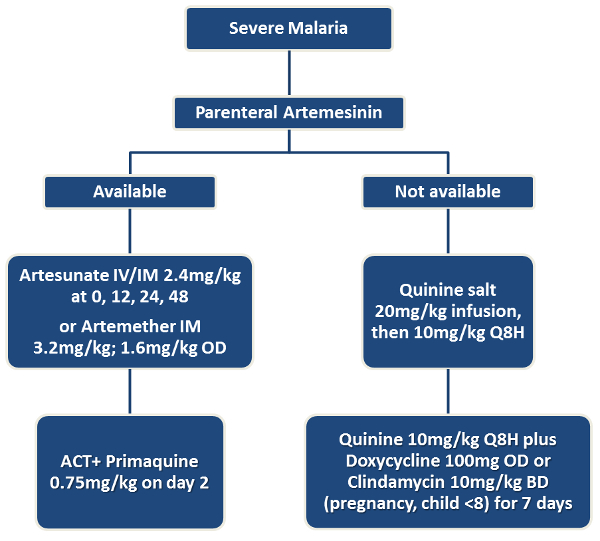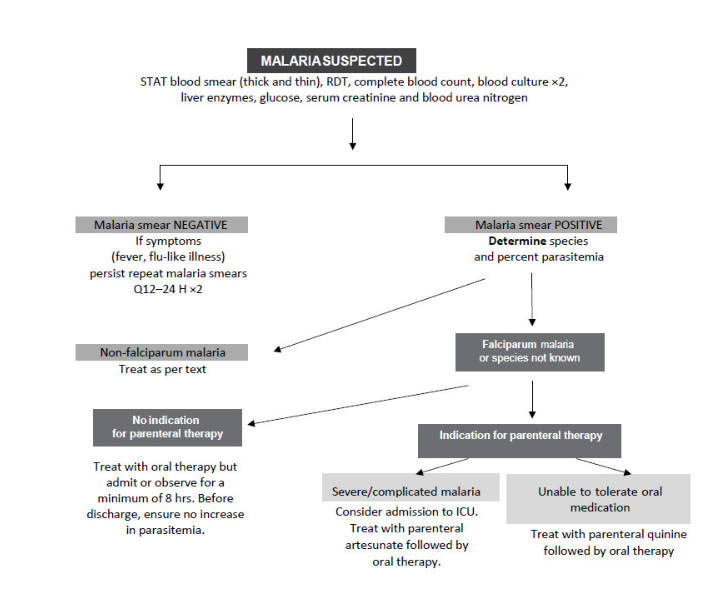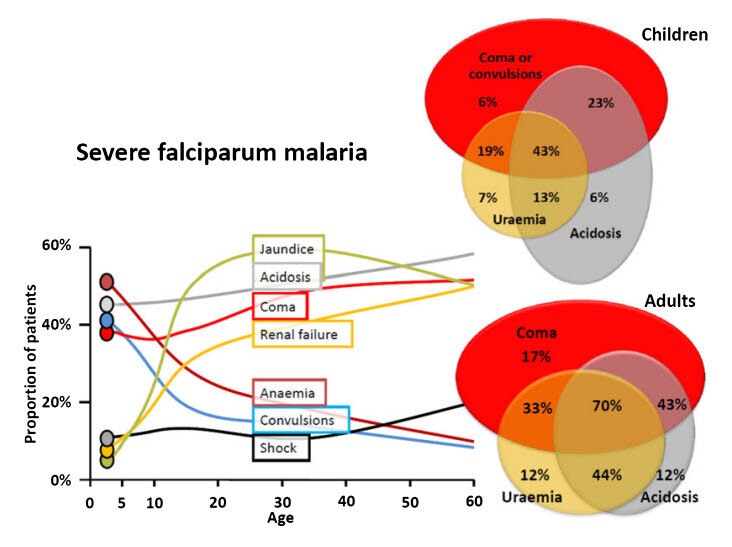However if artesunate is not available. IV artesunate is the first-line drug for treatment of severe malaria in the United States.

Criteria For Severe Malaria After Hien Et Al 1 Download Table
The recommended treatment for severe malaria.

How to treat severe malaria. Patients with manifestations of severe malaria should be treated promptly and aggressively with parenteral antimalarial therapy regardless of the species of malaria seen on the blood smear. From a public health perspective effective. Pregnant women in the first trimester are treated with quinine for severe malaria.
Falciparum malaria is artemisinin-based combination therapy ACT. If severe malaria is strongly suspected but a laboratory diagnosis cannot be made at that time blood should be collected for diagnostic testing to be done as soon as it becomes available and parenteral antimalarial. Patients who have severe P.
Problems in determining the epidemiology of severe malaria An accurate description of the incidence and distribution of severe malaria requires identification of cases and sev-. Which drug regimen to treat a patient with malaria depends on the clinical status of the patient the type species of the infecting parasite the area where the infection was acquired and its drug-resistance status pregnancy status and finally. Anti-emetics are potentially sedative and may have neuropsychiatric adverse effects which could mask or confound the diagnosis of severe malaria.
Malaria is a preventable and treatable disease. Vomiting is common in acute malaria and may be severe. The primary objective of treatment is to ensure complete cure that is the rapid and full elimination of the Plasmodium parasite from the patients blood in order to prevent progression of uncomplicated malaria to severe disease or death and to chronic infection that leads to malaria-related anaemia.
Falciparum malaria in both adults and children. The only problem of using quinine is that it causes hypotension when given intravenously. Malaria is a major cause of anaemia in tropical areas.
In areas of high malaria transmission malaria nearly all infants and young children and many older children and adults have a reduced haemoglobin concentration as a result. Severe malaria should be treated with intravenous IV antimalarial medications. Knowlesi can also cause severe disease and they do kill.
Malaria infection causes haemolysis of infected and uninfected erythrocytes and bone marrow dyserythropoiesis which compromises rapid recovery from anaemia. The best available treatment particularly for P. Injectable artemether and quinine are use for second line treatment.
Severe malaria is a medical emergency and should be treated urgently and aggressively. Follow up treatment consist of quinine 10 mgkg three times a day with doxycycline once a day. For severe malaria injectable artesunate is the recommended first line treatment.
Falciparum malaria or who cannot take oral medications should be given treatment by continuous parenteral infusion in a hospital. When treating severe malaria in addition to administering antimalarials other actions to manage symptoms and rule out infections may include the use of benzodiazepines intravenous IV fluids mechanical ventilation exchange transfusion blood. Another option to treat severe malaria is by giving quinine 20 mg IV infusion followed by maintenance dose 10 mgkg 8 hourly.
Then a full 3-day course of ACT should be given. Artesunate for Injection TM was approved by the FDA and is commercially available in the United States. Like previous editions this handbook is intended primarily for health professionals working in hospitals or health centres with inpatient facilities who are responsible for the management of patients with severe malaria.
As this manual focuses. Malaria can be a severe potentially fatal disease especially when caused by Plasmodium falciparum and treatment should be initiated as soon as possible. Malaria Symptoms Severe Malaria.
Parenteral antimalarial treatment may therefore be required until oral administration is tolerated. Of quinine with artesunate as rst-line treatment for severe malaria caused by all Plasmodium species. Severe malaria both P.
Artesunate 24 mgkg body weight bw administered intravenously IV or intramuscularly IM at the time of admission time0 then at 12h and 24 h then once a day until the patient is able to take oral medication. The primary objective of treatment is to ensure the rapid and full elimination of Plasmodium parasites from a patients bloodstream in order to prevent an uncomplicated case of malaria from progressing to severe disease or death. These infections are discussed separately in Sections 13 and 14.
The World Health Organization External recommends parenteral artesunate for treatment of severe P.

Malaria Treatment Guideline 2012

Injectable Artesunate Tools Training Severe Malaria Observatory

Treatment Of Malaria Malaria Site

Treatment Of Malaria Malaria Site

Chapter 7 Treatment Of Malaria Canadian Recommendations For The Prevention And Treatment Of Malaria Canada Ca

World Health Organization Who Definition Of Severe Malaria Hb Download Scientific Diagram

Severe Malaria Signs And Symptoms Severe Malaria Observatory

World Health Organization Who Definition Of Severe Malaria Hb Download Scientific Diagram

0 comments:
Post a Comment